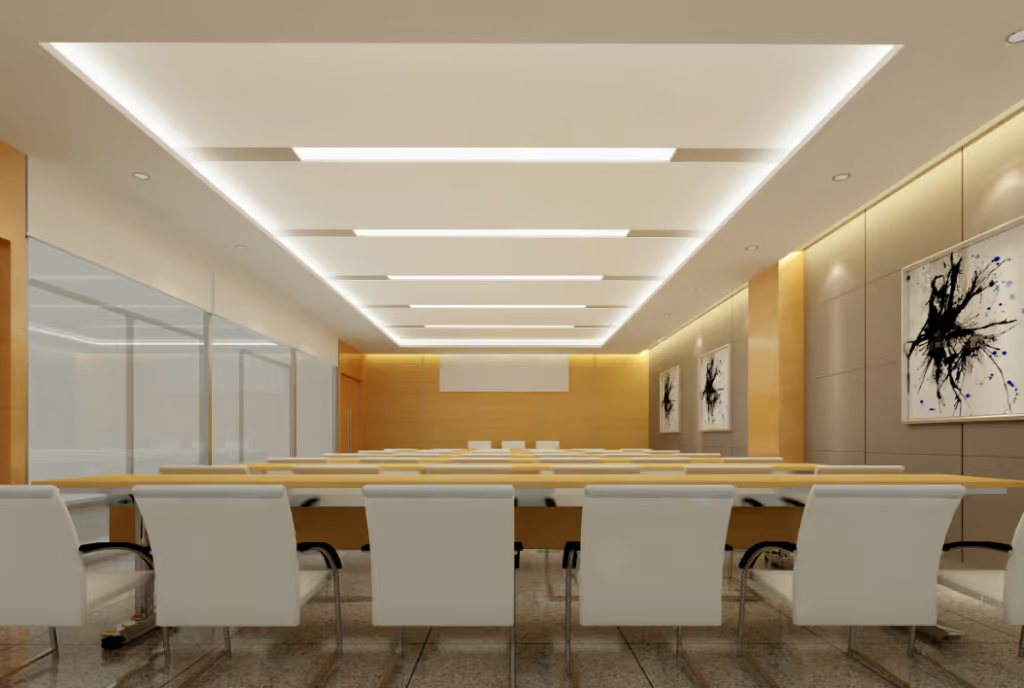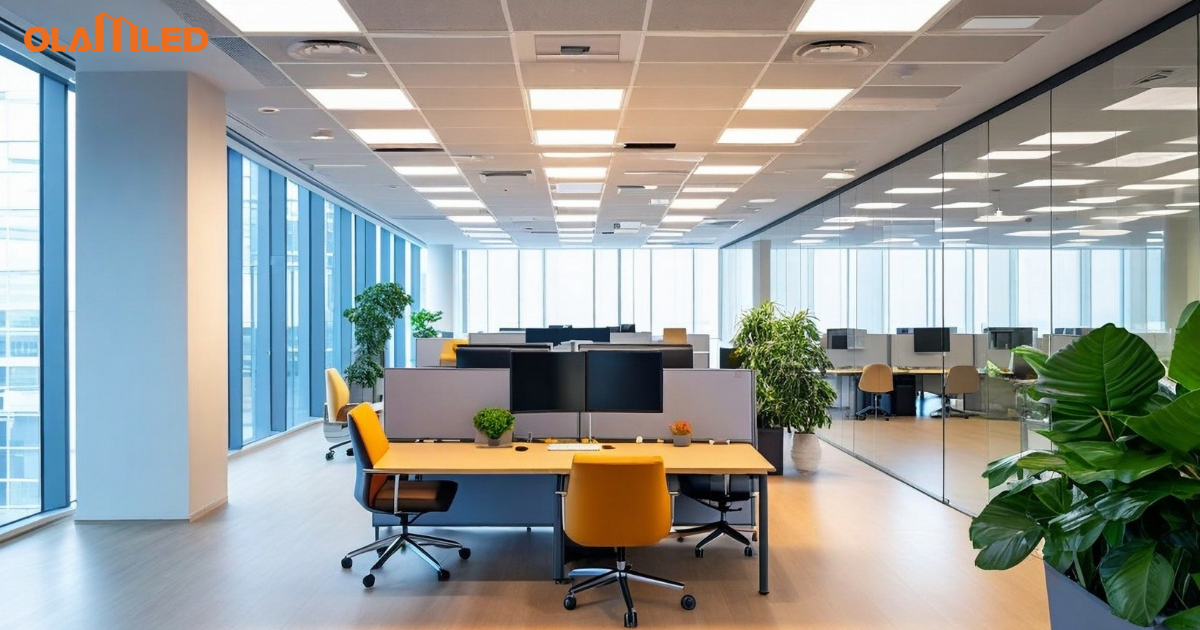Lighting is more than just a functional element in a room; it is a powerful tool that can significantly affect our mood and how we interact with our environment.
Whether you are setting up a home office, creating a cozy living room, or designing a space that promotes well-being, the right lighting is key to boosting mood and happiness.
In this guide, we will explore how you can optimize the atmosphere of any room with Indoor LED Lights to create the perfect environment for relaxation, focus, or vitality.

Understanding the Connection Between Lighting and Mood
Lighting has a significant impact on our psychological and physiological states. Numerous studies have shown that the type of lighting we use can affect our mood, productivity, and even physical health. One of the most important ways lighting influences our mood is through its effect on our circadian rhythm. This is the body’s internal clock, which regulates sleep-wake cycles and is directly impacted by light exposure.
For example, exposure to bright, cool white light during the day helps regulate our sleep-wake cycle and enhances focus, while using soft, warm light in the evening signals the body to relax and prepare for sleep. By using the right Indoor LED Lights, and adjusting them at the appropriate times, you can improve productivity, reduce stress, and even enhance your sleep quality.
Light therapy, which involves exposure to specific types of light at certain times of the day, has been shown to help treat conditions like Seasonal Affective Disorder (SAD) and other mood disorders. By understanding the connection between lighting and mood, you can use this knowledge to transform your space into an environment that supports your emotional and mental well-being.
Types of Indoor LED Lights for Mood Enhancement
Choosing the right Indoor LED Lights is crucial for creating the right atmosphere. Different types of lighting offer a range of brightness, color temperatures, and even color-changing options. Let’s look at how the different types of LED lights can improve your mood:
Warm White LED Lights (2700K – 3000K)
Warm white light is known for its calming and relaxing effects. It mimics the soft glow of incandescent bulbs, creating a cozy and inviting atmosphere. This type of light is perfect for areas where relaxation is the priority, such as living rooms, bedrooms, and dining areas. When you want to unwind after a long day or spend time with family and friends, warm white Indoor LED Lights help create the perfect setting.
Cool White LED Lights (4000K – 5000K)
Cool white light is bright and energizing, making it perfect for task-oriented spaces like kitchens, home offices, and study areas. This type of light helps improve concentration, reduce eye strain, and keep you alert, making it ideal for activities that require focus. It’s especially effective in the morning or during the day, when you need a boost of energy.
RGB LED Lights
RGB LED lights are one of the most versatile options available. These lights allow you to change the color to match your mood or the task at hand. For example, you can choose calming blue light when you need to unwind, or energizing red light when you want to feel more dynamic. RGB LED lights can be adjusted to create a personalized atmosphere that suits different activities, such as reading, exercising, or meditating.
Smart LED Lights
Smart LED lights take personalization to the next level. With a smartphone app, you can adjust the color temperature, brightness, and even set timers for when the lights should turn on or off. With smart Indoor LED Lights, you can set the lights to simulate natural sunlight during the day and gradually transition to a warm, soft glow in the evening. This helps regulate your circadian rhythm, improving overall health and sleep quality.
Smart LED lights can also be integrated with home automation systems, allowing you to create preset lighting scenes for different times of day. Whether hosting a dinner party or enjoying a quiet evening, you can easily adjust the lighting to create the desired ambiance.

Choosing the Right LED Light for Your Space
When selecting Indoor LED Lights, it’s important to consider the functionality of the space and the effect you want to achieve. Every room in your home or office serves a different purpose, and lighting should be tailored to meet these needs. Here are some tips for choosing the right lighting for your various spaces:
Living Rooms and Bedrooms
For areas that prioritize relaxation, such as living rooms and bedrooms, warm white Indoor LED Lights are the best choice. They create an intimate, cozy atmosphere, perfect for unwinding. If possible, choose dimmable LED lights for even more flexibility, allowing you to adjust the light based on time of day or your mood.
In the bedroom, consider using adjustable color temperature Indoor LED Lights to help you unwind before sleep. Many smart LED lights offer a dimming function, which gradually dims the lights to signal to your body that it’s time to relax, helping to improve sleep quality.
Home Offices and Workspaces
If you work from home or need a space where you can focus and stay productive, bright, cool white light is essential. Cool white light improves alertness and concentration, making it ideal for workspaces and study areas. Additionally, task lighting, such as LED desk lamps, can provide focused light for detailed tasks, like reading or working on a computer.
Consider incorporating daylight-spectrum LED lights, which mimic natural sunlight. These lights are not only great for boosting mood and productivity but also help regulate your sleep-wake cycle by promoting the natural rhythm of sunlight exposure.
Kitchens and Bathrooms
In kitchens and bathrooms, cool white or bright white LED lights are ideal, as they provide the necessary visibility for cooking or grooming tasks. LED lights in these spaces should be both functional and aesthetic, providing the right balance of brightness and energy efficiency.
For kitchens, consider under-cabinet LED strip lights, which can provide additional illumination for countertops and workspaces. These lights can be dimmed or brightened based on your needs and activities.
The Role of Color Temperature in Mood Enhancement
One of the most important factors in selecting Indoor LED Lights is color temperature. The color temperature of light is measured in Kelvin (K), and it can significantly affect how we feel in a given space.
Warm Light (Below 3000K)
Warm light creates a relaxed, comfortable atmosphere. It’s best used in areas where you want to relax and unwind, such as living rooms, bedrooms, and dining rooms. Warm light promotes a sense of intimacy and coziness, making it ideal for evening relaxation.
Cool Light (Above 4000K)
Cool light is energizing and promotes focus and alertness. It’s perfect for kitchens, workspaces, and study areas, where you need to stay engaged and productive. Cool light mimics daylight, helping to regulate your body’s circadian rhythm and boost mood and energy levels during the day.
RGB LED Lights
RGB LED lights provide ultimate flexibility by allowing you to choose from a wide range of colors. Different colors have different psychological effects, and you can use RGB lighting to match your mood or the activity you’re doing. For example, blue light is calming and is often used in meditation spaces, while red light can energize and create an atmosphere of excitement or drama.
Practical Tips for Setting Up Your Indoor LED Lighting
Now that you know how different types of Indoor LED Lights can enhance your mood, let’s discuss how to set up the lighting in your home or office for maximum effect.
Layered Lighting
To create a dynamic and functional space, use layered lighting. Layered lighting involves using a combination of ambient, task, and accent lights. Ambient lighting provides general illumination, task lighting is used for specific activities, and accent lighting highlights certain areas or features of the room.
For example, in a living room, you might use a central ceiling light for general illumination, along with a few lamps for task lighting (like reading), and accent lights to highlight artwork or architectural features. Layering these different types of lighting will help create a balanced and inviting atmosphere.
Smart Lighting Systems
Smart LED lights are an excellent way to customize your lighting based on your needs. With the help of a smartphone app, you can adjust the brightness, color, and schedule of your lights to suit different activities. For example, you can set your lights to automatically dim in the evening to signal to your body that it’s time to wind down, or brighten in the morning to help you wake up.
Placement and Positioning
The placement of your LED lights is just as important as the type of light you choose. Ceiling lights provide ambient illumination, while table lamps and wall-mounted lights can offer softer, more focused lighting. LED lights are also great for accentuating specific features of a room, like highlighting a bookshelf or art piece.
If you’re using LED strips, consider placing them under cabinets or along the edges of shelves to create a modern, ambient glow. For task lighting, consider LED desk lamps or adjustable pendant lights.
Benefits of Using LED Lights for Mood Enhancement
LED lights offer several advantages beyond just their ability to enhance mood. Here are a few key benefits of incorporating Indoor LED Lights into your home or office:
- Energy Efficiency: LED lights consume less energy than traditional incandescent bulbs, helping you save on electricity bills while contributing to environmental sustainability.
- Long Lifespan: LEDs last longer than traditional bulbs, often up to 25,000 hours or more, reducing the need for frequent replacements.
- Low Maintenance: LEDs are durable, resistant to damage, and require minimal upkeep.
- Customizability: With smart LEDs and RGB options, you can customize the lighting to your exact preferences, whether it’s for work, relaxation, or entertainment.
- Mood-Boosting: Proper lighting can improve mental health by promoting better sleep, reducing stress, and creating a more inviting, comfortable environment.
Discover OlamLED’s Indoor LED Lighting Solutions
At OlamLED, we offer a wide range of Indoor LED Lights designed to suit various needs and preferences. Whether you’re looking to enhance your living room with warm, relaxing light, or brighten up your workspace with cool, energizing illumination, our innovative products ensure that your space is both functional and aesthetically pleasing.
Explore our extensive collection of energy-efficient LED lighting solutions that are designed to enhance your mood and well-being, and let OlamLED help you create the perfect atmosphere for any room in your home or office. Visit us at OlamLED for more information.
Conclusion
The right Indoor LED Lights can dramatically enhance the mood and atmosphere of any space. By choosing the right type of lighting, adjusting the color temperature, and customizing your setup to fit the needs of your space, you can create an environment that supports your well-being, whether you’re working, relaxing, or entertaining.
Experiment with different lighting options and setups to discover how lighting can positively impact your daily life. Whether you’re looking to boost energy, enhance focus, or simply unwind, LED lighting offers endless possibilities to help you create the perfect atmosphere.



